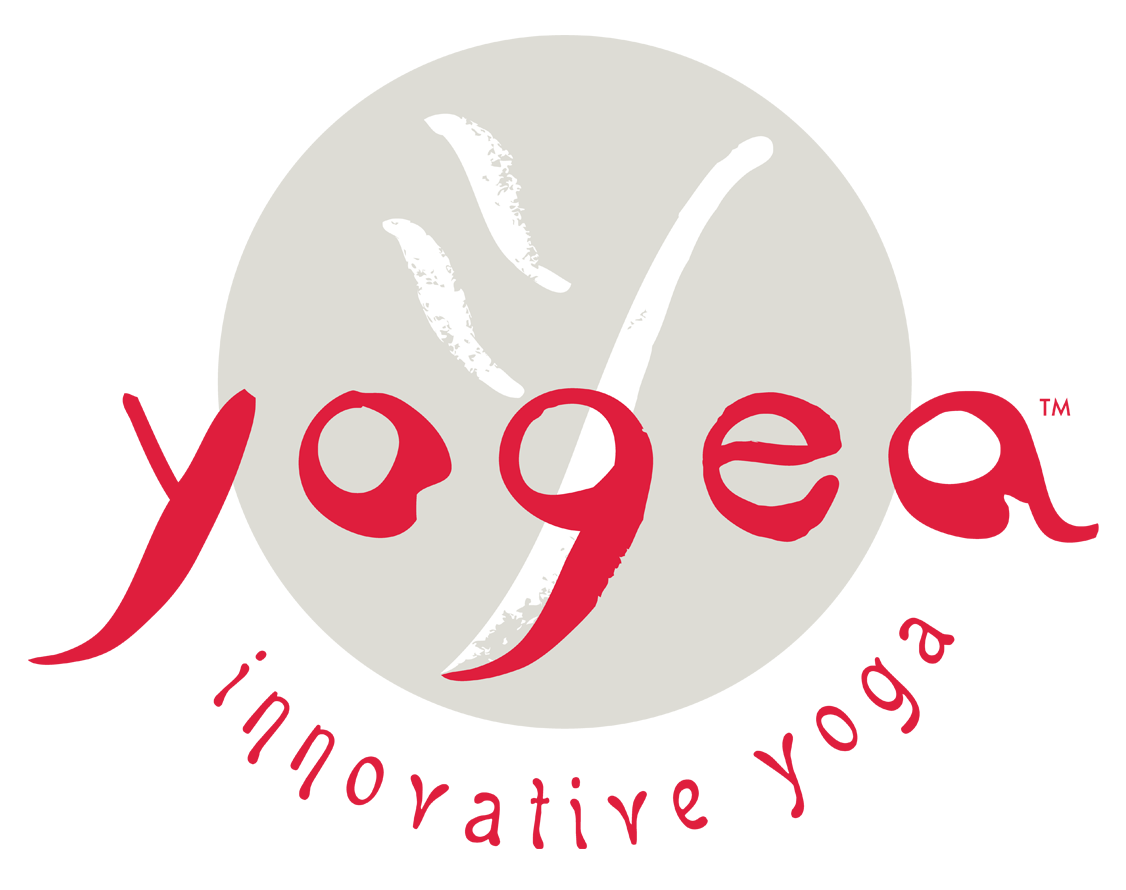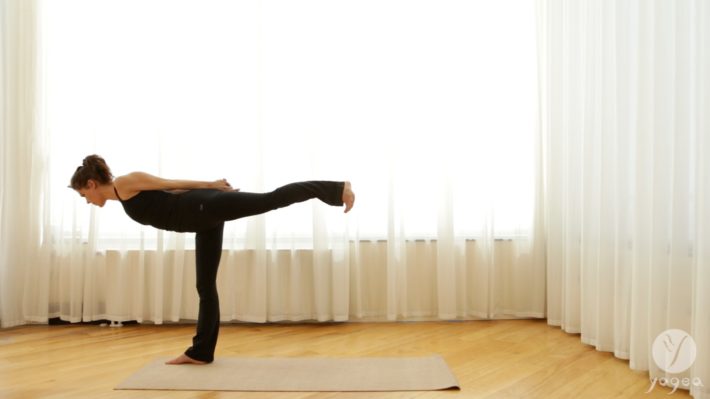Welcome to Yogea Asana Lab. This section features three neutrally rotated poses — High Lunge (Alana); Low Lunge (Anjaneyasana); Straddle or Fan (Prasaritta Padottanasana). These three different neutrally rotated poses have myriads of benefits and can be placed in different parts of the asana practice or separately. High Lunge is the optimal warm up pose that fires up the thigh (quads) muscles, lengthens the sides of the waist, squares the hips while stretching the psoas, groin, calves, hamstrings and even the spine. It can be assumed with different bind variations or solely with the arms extended over the head. It is best suited for the first section of the class as it brings heat while stretching all tendons and ligaments safely. It is important to practice it with the proper alignment as you square the hips and make sure the knee tracks over the ankle.
Similarly, the second pose — low lunge provides a deep stretch in the groin and posas while opening up the mid back. It is also ideal as a warm up pose, or as a preparation for other standing neutrally rotated poses like Warrior I. It is very well combined with its counter pose — runner’s stretch. You can get into it by simply shifting the hips back and forth into low lunge. It is best suited for the warm up series, however more advanced variations could be practiced after the culmination of the class. Anjayenasana is a natural precursor to split pose, and could lead to attaining Hanumanasana. Because one knee is on the floor while Anjaneyasana is performed it is mandatory to square the hips and to have the knee over the ankle, in order to protect the joints, just like you did in High Lunge. These two poses are best practiced in the morning while you wake the body up.
The third pose — Fan, also known as Straddle in the yoga world, is a neutrally rotated hamstring-stretch and a forward bend. It has different stages of attainment and the first is just extending the spine in a flat back so it is parallel to the floor. As you increase the notch in your hip flexors you will be able to fold further, making sure that your spine is straight and the pose is initiated from the hip, and not from the lower back. As a forward bend it calms the mind, regulates blood pressure, sooths the nervous system and allows instant emotional release, while stretching the hamstrings and partially the calves when the knees are bend. It has many bound variations and once you get your head naturally to the ground it takes you into Sirsasana I (Headstand). Straddle could be practiced after the warm-up section in between externally rotated poses, giving the hip flexors a pleasant relief. It is also good for the middle of the class before the peak pose. If you choose to do it at the beginning of the class you need to warm the hamstrings up with a couple of rounds of Sun Salutes. If you wish to practice it separately, make sure that your feet are parallel and slightly tucked in, and almost pigeon-toed, so you can reap its effect. It is a great pose to do after a long day of sitting at work. As you open your hamstrings alternate bending your knees first and then deepen into it to enjoy its pacifying effect.
Yogea Asana Lab is not a yoga routine and should be regarded solely as an educational platform to reinforce proper postural alignment and improve the quality of your practice. The approach is integrated as poses are grouped into different targeted categories. Each set of poses is demonstrated only on one side. The route of assuming poses and releasing through counter-poses is mapped clearly and slowly, allowing time for assimilation and grasping. The main objective is to guide you in and out of poses safely and smoothly, as well as to acquaint you with basic anatomical and energetic principles that weave the geometry of every asana. In turn, you will be able to perform the Yogea routines with clarity, precision and abandonment. As you follow the tips of proper alignment you will feel more stable, ready to deepen your practice and eager to transition gracefully from one stage to the next both on the mat and in life.


Leave a Reply